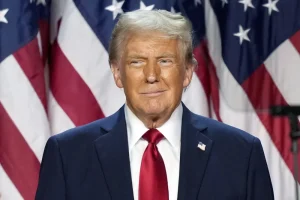United States Withdrawal from the Paris Agreement and the needs to legally change to help aid the environment for a better future
Written by Olivier Noël Yambo
5 June 2017 saw World Environment Day take place with all its glory, so this month Lawyer Monthly decided to hear from Olivier Noël Yambo who explains what the future for our planet will be; simultaneously, at the start of June 2017, the President of the United States, Donald J. Trump, created a surprise when he announced the United States’ intent to withdraw from the Paris Agreement — a landmark instrument on climate change developed under the United Nations Framework Convention on Climate Change (UNFCCC). In this article, Olivier addresses how legislation should change and what the regulative authorities should address, now that America has withdrawn from the Paris Agreement.
The Future of the Paris Agreement
Labelled as the first-ever universal, legally binding global climate deal, the Paris Agreement was adopted by the 195 UNFCCC Member States at the Paris Climate Conference (COP 21) on 12 December 2015, with a view to hold the Earth’s average temperature rise to well below 2°C, preferably to no more than 1.5°C above pre-industrial levels. [1] Following its entry into force on 4 November 2016, the Agreement became legally binding for all its Parties, including the United States.[2]
Cause and Effect
On 1st June 2017, President Trump held a press conference at the White House and provided insight into reasons why the United States are opting out of the Paris Agreement.[3] One of the central reasons invoked is that the Agreement is economically unfair to the United States because it places them at an economic disadvantage compared to other parties. For instance, under the Agreement, while the United States are blocked from developing their clean coal sector, countries like China and India are empowered to build additional plants and increase their coal production. Another example is that the Agreement refrains the United States from using their non-renewable energy reserves. The United States believe that this would negatively impact on their economic growth and slow down their efforts aimed at reducing joblessness and poverty. A last example is that the Agreement requires industrialised nations like the United States to provide significant financial support to developing countries, many of which rank among the world’s major emitters of carbon dioxide.
President Trump stressed that the United States were withdrawing unless the Paris climate accord was renegotiated. He also indicated that the United States were ready to negotiate a new climate deal that would be fairer for all.
The decision of the United States — the second world’s largest emitter of carbon dioxide after China— to withdraw from the Paris climate instrument could inflict a serious blow to the world community’s efforts to combat global warming and climate change.[4] Such a decision could not only jeopardize the four-year Durban process that paved the way to the conclusion of the Paris Agreement, but also send the wrong signal to other State actors — both Parties and non-Parties — increasing the risk of hampering any further political impetus that may be needed in the future.
What legal changes are needed to ensure that the United States’ withdrawal does not undermine the global efforts to fight against climate change?
One possible legal change would be to amend the content of the Paris Agreement in a manner that places industrialised nations and developing countries on an equal footing and responsibility when it comes to reducing greenhouse gas emissions. To that end, several provisions of the Paris Agreement should be amended. More specifically, the principle of common but differentiated responsibilities should be removed (Article 2(2)). The requirement for industrialised nations to provide financial support to developing countries should be replaced in favour of voluntary supports (Article 9(1)). And lastly, the prohibition of reservation under the Paris Agreement should be lifted (Article 27). Such amendments would not only present the advantage of ensuring that the Paris Agreement is not discarded for similar reasons than those invoked by the United States, it would also encourage the United States as well as other non-State Parties to reconsider their position on the Paris climate deal. However, the drawback lies in the challenges of adopting these amendments and their consequences.
Amending a multilateral treaty such as the Paris Agreement may prove to be a herculean task. Any proposed amendments to the Paris Agreement must be agreed by consensus. Where consensus cannot be reached, the amendments must be adopted by a three-fourths majority vote (Article 15 UNFCCC and Article 22 Paris Agreement). Given their controversial nature, it is highly unlikely that these amendments would be adopted either by consensus or by a three-fourths majority vote. Indeed, the three proposed amendments impinge on fundamental aspects and values of the Paris climate agreement. For instance, the principle of common but differentiated responsibility represents one of the main pillars on which the Paris Agreement is based. This is well reflected in both its Preamble and Article 2(2). The prohibition of reservation is the guardian of the treaty’s integrity. Enabling reservation under the Paris Agreement could defeat its object and purpose. As for the requirement of industrialised nations to provide financial support to developing countries, even if the amendment was to pass, there is little chance that the majority of developing countries would not walk away from the Agreement.
Another possible legal change would be to renegotiate a new climate deal. A new legally binding instrument could be negotiated to fit with the interests of countries like the United States. However, this possibility can present more drawbacks than advantages. Given the stakes involved, there is no guarantee whatsoever that these negotiations would lead to the successful conclusion of a new climate agreement. And even if they were, the negotiation process would require long years of debates and discussions, which in turn, could hinder the global process of combating climate change.
A chance or no change?
In the light of the above, a workable and meaningful solution would be to give the Paris climate instrument sufficient time to mature and yield spin-off effects. While the United States’ withdrawal could inflict a serious blow to the world community’s efforts to tackle climate change, it could also provide a new impetus to greater international solidarity and cooperation among all nations. At the first session of the Conference of the Parties serving as the Meeting of the Parties to the Agreement (CMA1) held in November 2016 in Morocco, many nations expressed their strong determination to implement the Paris Agreement, even if the United States withdraw.[5] China, India, Canada, and the European Union have already indicated that they remain committed to the Agreement’s long-term goals.[6] Furthermore, since the United States’ withdrawal announcement, ratification has been made by three other countries, namely, Norway, Moldova and Saint-Vincent and the Grenadines. As of the end of June 2017, the Paris Agreement counted 151 States Parties, including the United States.[7] Whether the United States decide to carry out their withdrawal plan, it is for the world’s nations to work in concert to close the gaps and address the issue of global climate change. The more countries commit themselves to the Paris Agreement, the better it will be implemented and the more likely that it or part of it crystallises into customary international law.
In the end, what is needed to help aid the environment for a better future is not a legal change but a chance to give the Paris Agreement the opportunity to become what it was precisely designed for — a universal, legally binding global climate deal binding all States including those that have not ratified it.
Olivier Noël Yambo is a PhD candidate and Research Assistant for the Centre for Marine Ecological Resilience and Geological Resources at Nottingham Law School.
[1] https://ec.europa.eu/clima/policies/international/negotiations/paris_en https://www.c2es.org/international/negotiations/cop21-paris/summary
[2]The Paris Agreement was accepted (ratified) by the United States on 3 September 2016;
http://unfccc.int/paris_agreement/items/9485.php
[3] https://www.nytimes.com/2017/06/01/climate/trump-paris-climate-agreement.html?mcubz=2
[4] http://www.cnbc.com/2017/05/31/how-us-carbon-pollution-compares-with-the-rest-of-the-world.html
[5] https://www.scientificamerican.com/article/nations-will-forge-ahead-on-climate-action-despite-trump/
[6] http://www.reuters.com/article/us-eu-china-idUSKBN18R3A4 ; http://www.climatecentral.org/news/china-india-climate-leaders-west-falters-21377
[7] http://unfccc.int/paris_agreement/items/9444.php




















